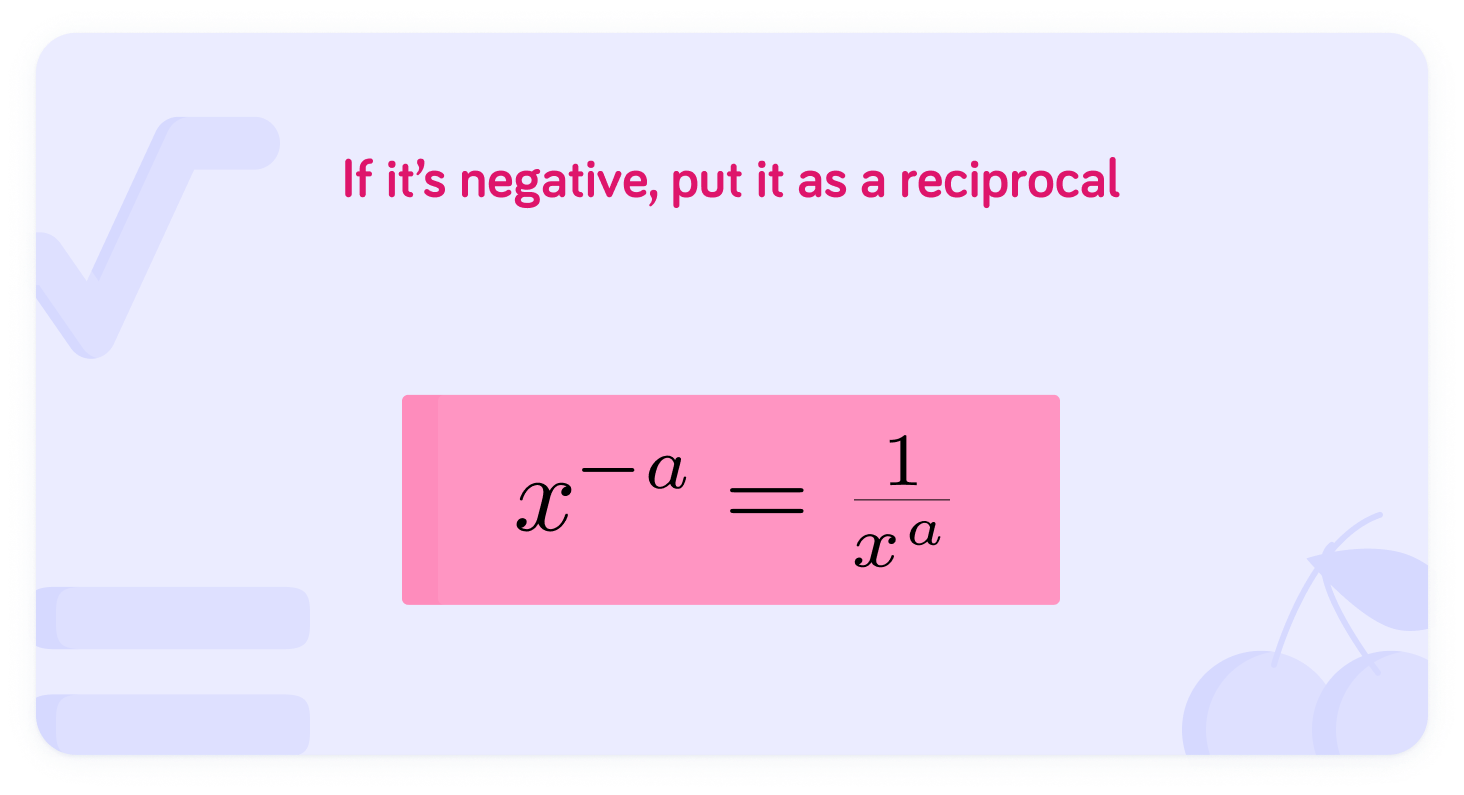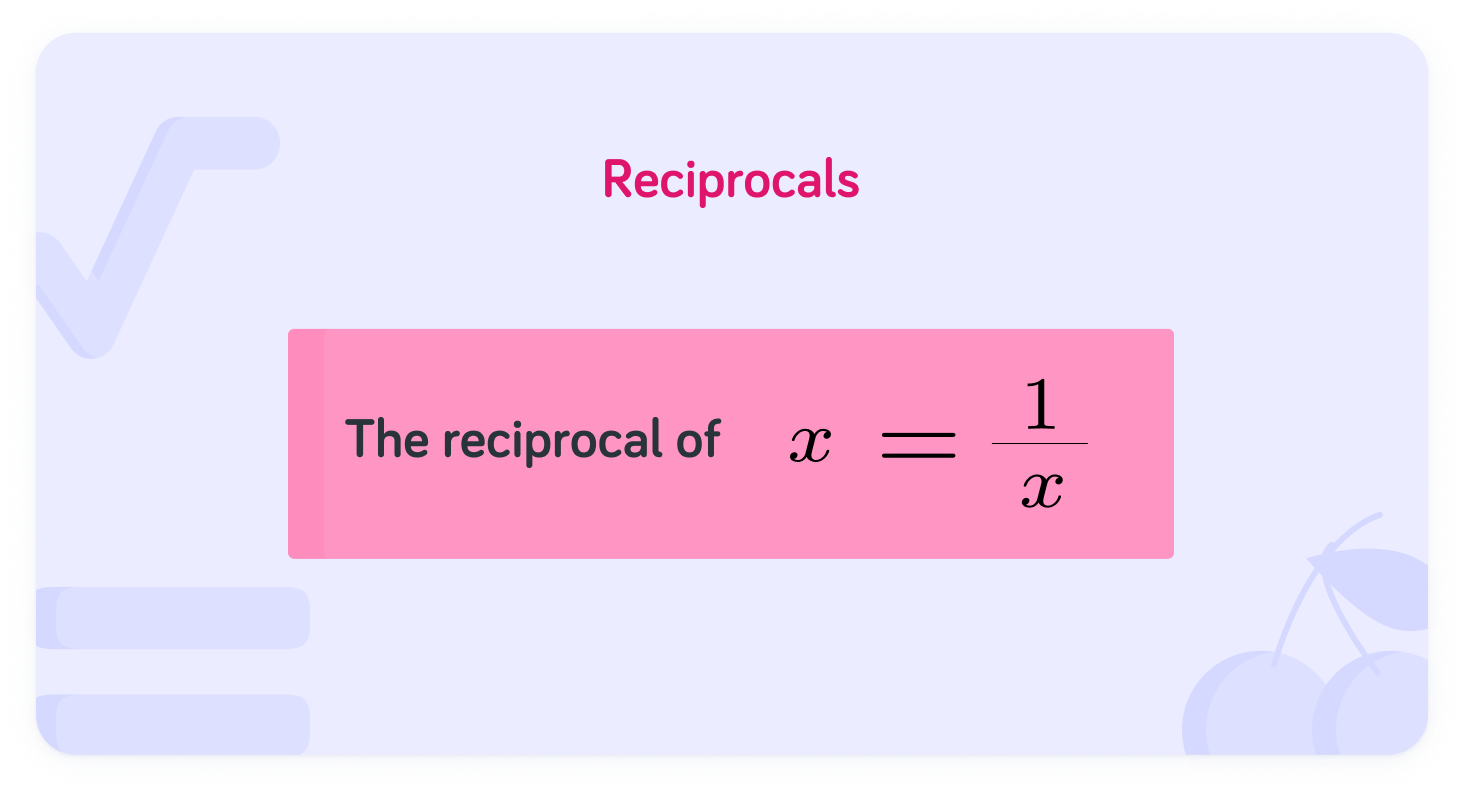YOU ARE LEARNING:
Indices: Negative Powers

Indices: Negative Powers
Raising a number to a negative power creates a reciprocal: a fraction where 1 is the denominator.
The power in an index number can be negative like 3−2 or 4−5
To see how this works, we need to divide some index numbers.
What is x5x3?

We have found that x5x3=x−2, an answer which has a negative power.
But what does x−2 mean?
We found that x5x3=x−2.
Let's expand our calculation to understand the answer.
What is another way of writing x3?

We can write x5=x×x×x×x×x
This gives x5x3=x×x×x×x×xx×x×x.
We can now cancel the x pairs in the numerator and denominator.
x×x×x×x×xx×x×x
Now we have cancelled the x terms, how is this simplified? x×x×x×x×xx×x×x

By breaking the fraction down we have shown that
x5x3=x21
We have seen that x5x3=x−2 and x5x3=x21, what does that mean?

This is the rule for negative powers
x−2=x21
We have found the rule for negative powers, x−2=x21. How can we state this in words?

A reciprocal is one over the original number.
The reciprocal of 2 is 21.
If the power is negative, express it as a reciprocal
Have a look at the image

Let's try this one 8−2.
First we take out the negative sign to give 82.
First, what is the reciprocal of 82?

Finally, we calculate the denominator to give
8−2=641.
What is 6−1?

Let's have a go at an example: 3−3
Remove the negative sign
This will leave us with the index 33.
Find the reciprocal of 33.

So far we have 3−3=331, what is the final answer?

Our final fractions is
271 Nice 👍
Try this one: what is 4−3?

What is 5−2?

Summary! A reciprocal is one over the original number
The reciprocal of 2 is 21.

Indices or powers can be negative numbers
x−y is an index number with a negative power.

A negative power is the reciprocal of the positive power
The image shows how that works

We can find 2−2
First we have 2−2=221
We simplify to 221=41=0.25

